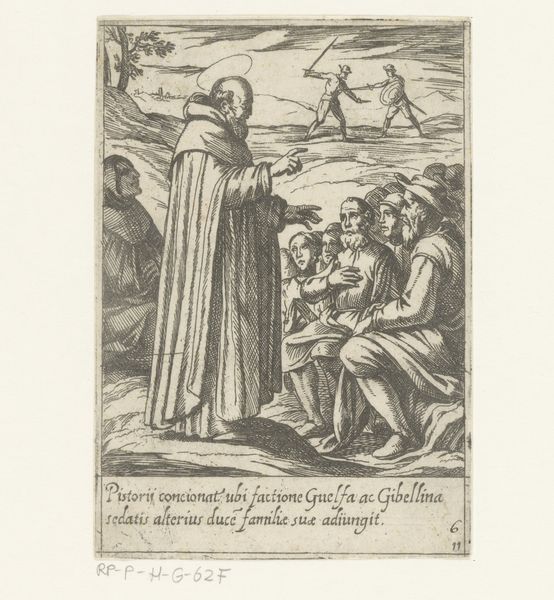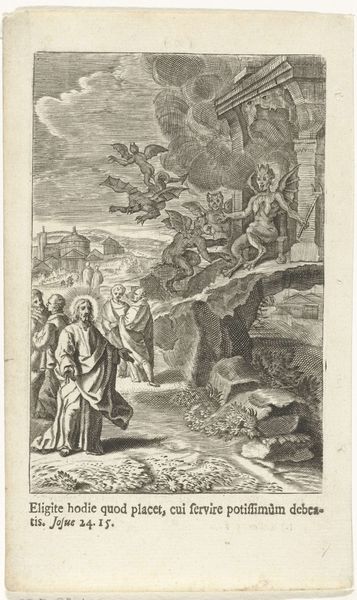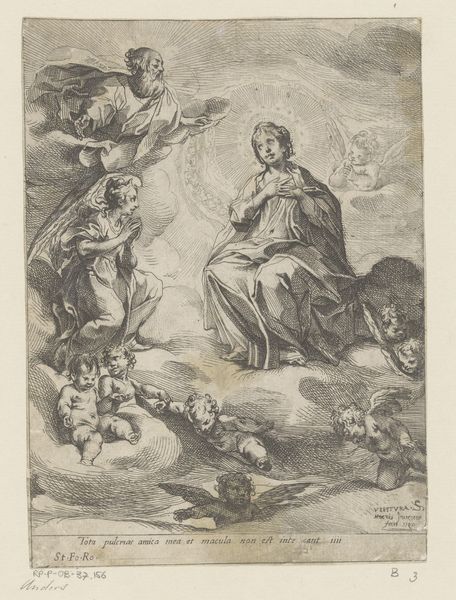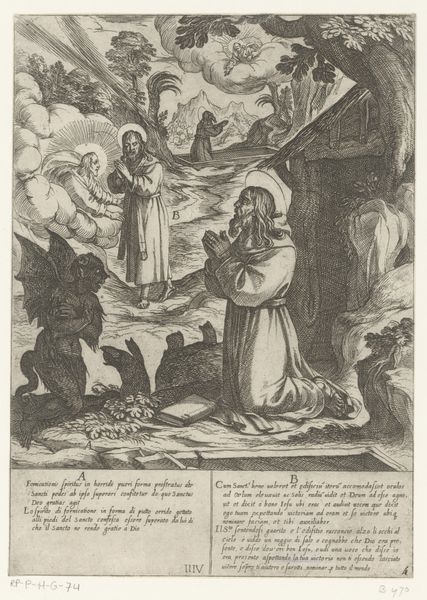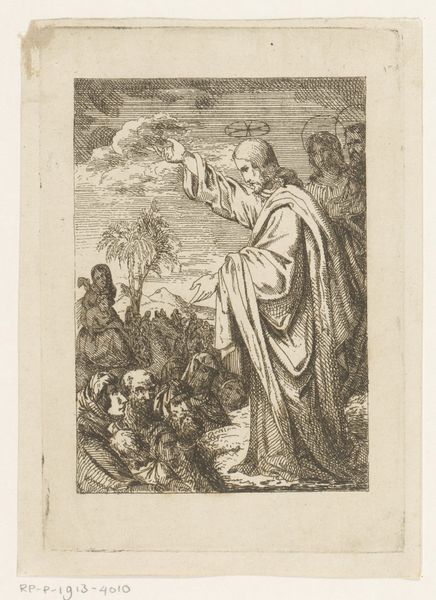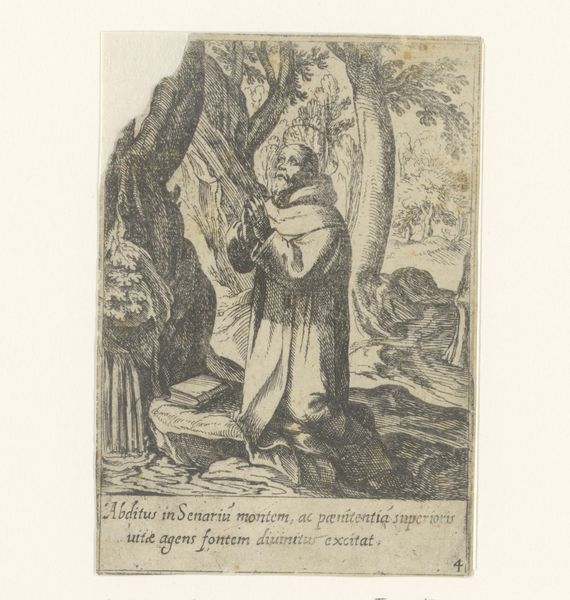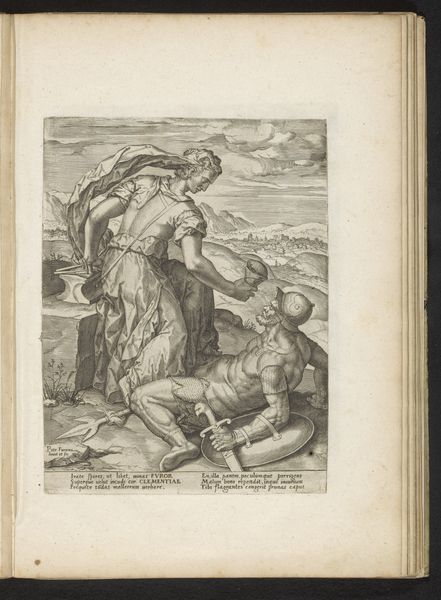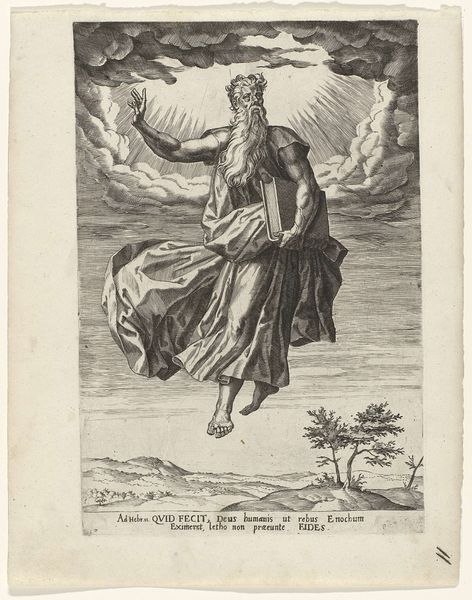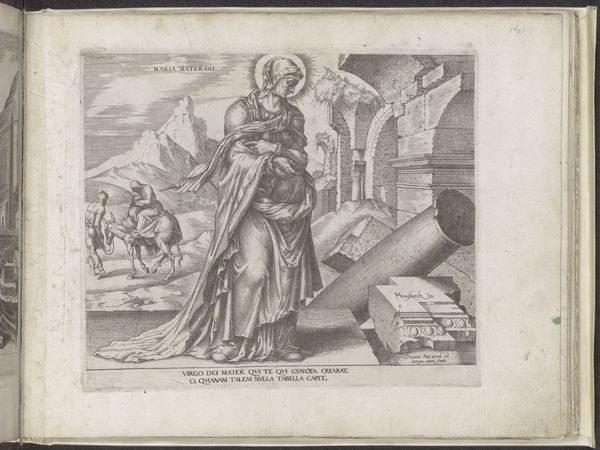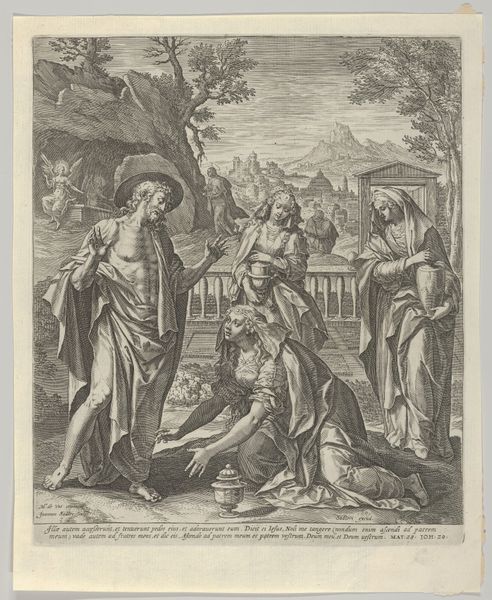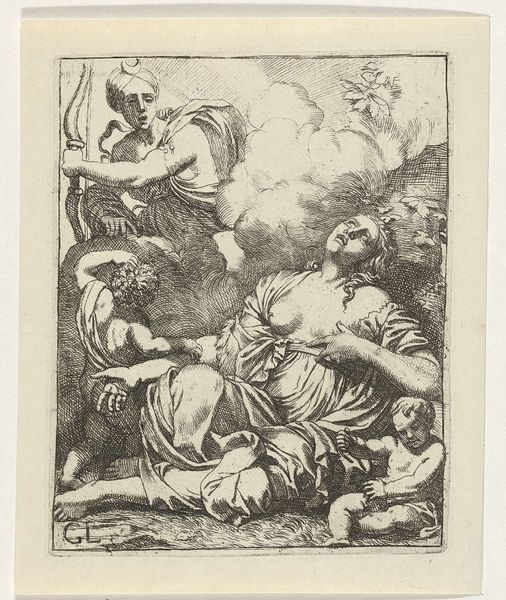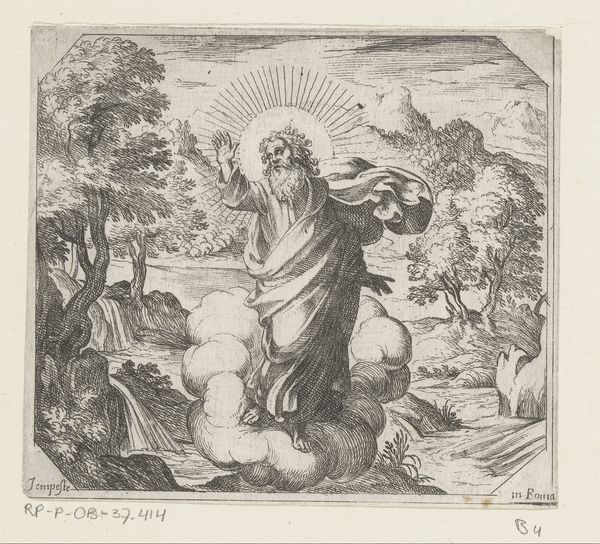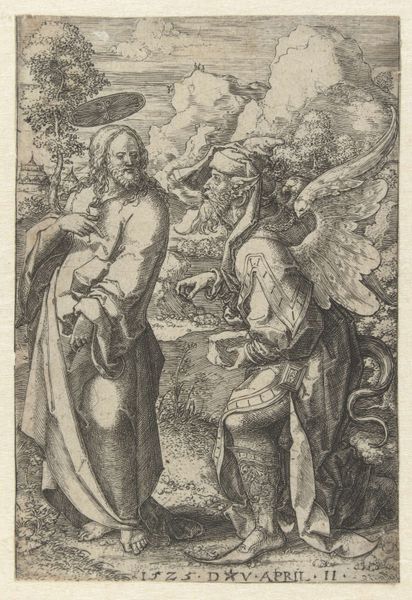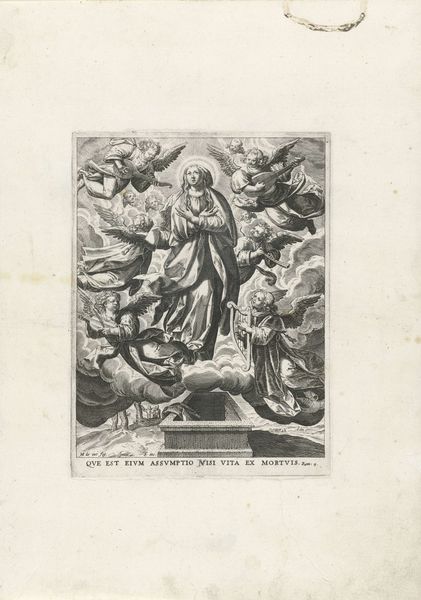
print, paper, engraving
#
narrative-art
#
baroque
# print
#
figuration
#
paper
#
history-painting
#
engraving
Dimensions: height 115 mm, width 80 mm
Copyright: Rijks Museum: Open Domain
Curator: Here we have Antonio Tempesta's engraving, "The Saint Philip Praying for the Souls of Two Brothers," created in 1591. The print captures a pivotal moment of intercession. Editor: It's certainly evocative, a dense flurry of etched lines shaping a vision of spiritual ascension. There's a palpable sense of upward movement, of release, even from just the way the figures are arranged on the plate. Curator: Precisely. Tempesta, deeply embedded in the late Mannerist and early Baroque movements, explores themes of piety, salvation, and the negotiation between the earthly and divine realms. This print is a superb illustration of Counter-Reformation ideals in art, highlighting the importance of saints and their role as intermediaries. Editor: I see it, not only in the figures and their gestures, but in how Tempesta manages to give even something as seemingly immaterial as souls such physical weight. We've got praying saints on earth and saints holding court in the heavens; souls drifting like sacks in between the realms. Even the act of intercession takes on material form, doesn't it? I’d be interested to examine the distribution network of prints like this, how such inexpensive goods acted as tools for a culture war during the Counter-Reformation. Curator: It’s a compelling idea. Here, Philip embodies agency—his devotion and direct connection to the heavens acting as a balm and instrument of change. But consider the Latin inscription...it tells us that Ugoccioni's and Sosterii's souls have taken the form of Lilies and now will be led to heaven. These men, perhaps, weren't nameless, ordinary brothers at all. Editor: I suppose what I appreciate most is the visual translation of dogma into a readily reproducible commodity. The means and materials shape the message. To me, understanding that process deepens the significance. Curator: Yes, and that production is ultimately meant to impact viewers on both spiritual and material levels, shaping belief through mass-produced imagery. These layered contexts contribute to a rich and ongoing dialogue. Editor: Agreed, it gives me plenty to consider about the relationship between belief, labour and art.
Comments
No comments
Be the first to comment and join the conversation on the ultimate creative platform.
